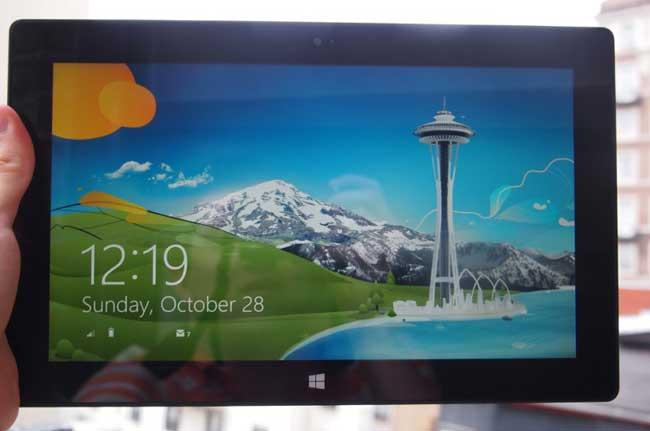
Turns out Windows RT isn’t just a flash in the pan – at least as far as Nvidia is concerned. The chip maker’s vice president of computing products, Rene Haas, just told investors on a quarterly call that next-generation Tegra 4 processors will power Windows RT devices. Unlike Windows 8 and most other major versions of Microsoft’s OS, Windows RT is designed to run on ARM-based processors such as the Tegra chips and Qualcomm’s Snapdragon processors. Nvidia’s support of Windows RT comes despite lackluster sales and consumer confusion about the difference between Windows RT and Windows 8.
Currently, Nvidia’s Tegra 3 processor is powering Microsoft’s Surface RT tablet, the Asus VivoTab RT, and several other tablets. Nvidia’s public support for the fledgling RT is a sign that while consumers aren’t enamored with it, both Microsoft and manufacturers still believe it has promise. According to IDC figures reported by ComputerWorld, only 200,000 Windows RT tablets shipped in the first quarter of this year, representing just 0.4 percent of the entire tablet market, which is dominated by the iPad and Android-based tablets.
As Haas pointed out on the call, ARM-based processors like the upcoming Tegra 4 have several advantages including a long battery life and a slimmer form-factor that will be attractive to mobile users who are used to the convenience of their smartphones. He also stated that 100 percent of smartphones are currently using ARM processors so “[t]here’s no reason to believe ARM won’t have dominance in tablets as well.”
Nvidia introduced the Tegra 4 processing platform at CES back in January, but hasn’t stated which manufacturers will be using the technology in upcoming Windows RT tablets. PhoneArena speculates that Tegra 4 could be inside the upcoming HTC R7 and R12 Windows RT tablets, although it seems more likely that Qualcomm will be powering those two devices.
While Nvidia, Qualcomm, and Microsoft still believe there is a place for Windows RT, we’ve seen more than a few complaints about it. One of the biggest gripes is the lackluster app store which currently only has 65,000 apps. Even compared to Windows Phone’s 120,000 apps, that’s a paltry number. The Android and iOS app stores each have close to a million apps. It’s the one item Haas hinted needs improvement, “The faster that growth continues, the better for the overall platform, but we’re in the first inning of this ballgame and it’s not over by any means.” Let’s just hope that Windows RT isn’t the equivalent of baseball’s perennial losers, the Chicago Cubs.
What do you think? Is there hope for Windows RT if it becomes available on more tablets and expands its app store?
Editors' Recommendations
- The best Windows tablets for 2024
- Intel says Moore’s Law is alive and well. Nvidia says it’s dead. Which is right?
- Nvidia RTX 3080 Ti vs. AMD RX 6900 XT: 4K gaming compared
- Latest Windows 11 update improves taskbar on tablets
- This 10.3-inch Lenovo tablet is only $129 for Cyber Monday



